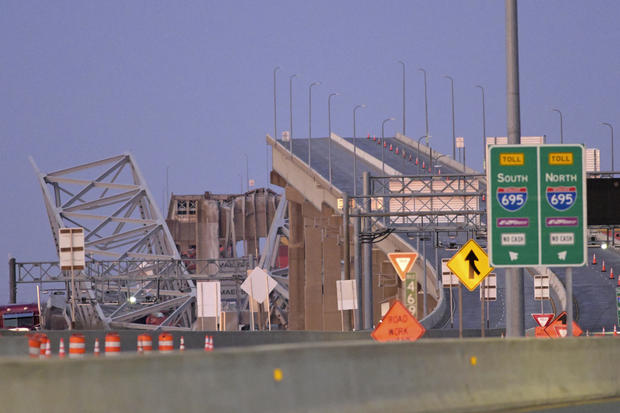In a sobering early morning occurrence on March 26, 2024, the Francis Scott Key Bridge—a pivotal component of Baltimore’s transportation network—succumbed to a catastrophic collapse. The sentinel of steel and concrete was struck by the cargo ship Dali as it encountered a power failure, leading to a scene that witnesses and authorities alike are struggling to come to terms with.
An Unforeseen Disaster
The Francis Scott Key Bridge has long stood as an iconic structure, gracing the Patapsco River and serving countless vehicles each day. Its partial descent into the river came without warning, leaving two individuals from a maintenance crew clinging to the remains of the structure, with six further workers currently unaccounted for.
Search and Rescue Operations
Maryland’s emergency response was catalyzed immediately, assembling a multi-agency task force striving against the clock to locate survivors amid the treacherous waters. The operations are being spearheaded by the Baltimore City Fire Chief James Wallace, who terms the scene “an active search and rescue,” with the U.S. Coast Guard providing critical support.
The Courage of the Rescued and the Unknowns
Amid the chaos and confusion, one worker was fortunate to emerge from the ordeal unscathed, while another succumbs to his injuries within the sanctuary of the University of Maryland Medical Center. The stories of these two individuals stand in stark contrast to the uncertain fate of their colleagues, who were engaged in what was believed to be routine maintenance work, addressing the wear and tears of the bridge.
Governing Support and Assurance
Governor Wes Moore didn’t hesitate to declare a state of emergency, putting the full force of the federal government behind the rescue operations and cementing his commitment to those impacted by the tragedy. Present at the scene, Moore conveyed gratitude to those leading the daring rescue efforts while underscoring his dedication to offer federal resources in collaboration with President Biden’s administration.
Impact Beyond Immediate Surroundings
The aftermath of the bridge’s collapse extends beyond the physical damage. It has significantly disrupted the flow of local and regional traffic, cascading into detours and redirections to manage vehicle movement. This is a choke point for commerce as well, severing a vital artery to the Port of Baltimore, causing a standstill to shipping operations—a repercussion that carries implications far beyond the city’s maritime borders.
Details Emerge in a Confused Tangle
While the initial details provided by the authorities offered a glimpse into the severity of the bridge collapse, as the day progressed, a clearer picture began to emerge. The Dali—a Singapore-flaged marvel belonging to Synergy Group and chartered by Maersk—had been in the vicinity, transporting cargo through the deep blue when it collided with the bridge’s support column upon losing power.
A Heroic Reaction
A mayday issue prior to the collision triggered a timely stop to bridge traffic—an action that may well have prevented greater casualties, according to Governor Moore. Such foresight in the face of imminent peril stands as a testament to the quick thinking and decisive actions of those assigned to protect and serve.
Dispelling Fears of Foul Play
Compounding the intense efforts of the search and rescue teams, FBI involvement initially sowed seeds of concern about potential terrorist activity. This angle was swiftly and conclusively shut down by FBI’s William DelBagno, who affirmed that no evidence linked the distressing event to an act of terror. With the FBI providing resources to aid in the aftermath, including specialized underwater search teams, the focus remains solely on rescue and investigation.
The Toll on the Human Spirit
Mayor Brandon M. Scott echoed the collective heartache, branding the collapse as an “unthinkable tragedy,” a sentiment that was reverberated across various social media by Baltimore officials offering prayers and support. Meanwhile, onlookers recounted the raw shock of the bridge’s downfall, likening the noise to thunder and the vibrations to that of an earthquake—an ominous, destructive force that has forever altered the landscape, both geographically and emotionally.
Moving Forward in the Wake of Tragedy
With the National Transportation Security Board launching an investigation and hearts heavy among the people of Baltimore and beyond, the road to recovery looks arduous. Not only in the context of tangible reconstructions for infrastructure and commerce but also the emotional and psychological recovery for families, friends, and colleagues of those directly impacted.
The Governor’s promise for a rebuild rings loud and clear; however, the road to restoration is marred by innumerable challenges, foremost being an accurate estimation of the time needed to reclaim what was lost—not just a bridge, but a sense of security, routine, and normalcy for the many lives intersecting at the now-collapsed Francis Scott Key Bridge.





